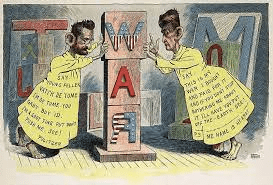
Powered by Froala Editor
Yellow Journalism
Powered by Froala Editor
Yellow journalism, or "yellow press", refers to an unethical, irresponsible brand of journalism given to hoaxes, altered photographs, screaming headlines, "scoops", frauds, and endless promotions of the newspapers themselves. This term was first used in the 1890's to describe the competition between two rival New York City newspapers, the World, and the Journal.
In 1883, Joseph Pulitzer purchased the New York-based newspaper, the World. With its vivid, sensational reporting and excellent crusades against political corruption and social injustice, Pulitzer made the World, the largest newspaper circulation in the country. One of his most famous staff writers was Nellie Bly (Elizabeth Cockrane).
Bly was best known for her "stunt" stories. An example of one of her "stunts" was when she pretended to be insane and committed herself to the New York Blackwell Island Asylum. When she was released after ten days, she wrote a story exposing the asylum's poor conditions. The story sparked reform from all around the country! Her most famous story, however, included her trip around the world. During that time period, Jules Verne wrote "Around the World in Eighty Days"; Bly was inspired to do it in less time. Her mission was accomplished in 72 days! She captured readers' attentions by writing daily about her adventures.In 1895, however, William Randolph Hearst, the son of a California mining tycoon, challenged Pulitzer's superiority, when he bought the Journal. Previous to his relocation to New York, Hearst owned the widely popular newspaper, Examiner, back in San Francisco. Hoping to duplicate the Examiner's success with the Journal, Hearst intended to surpass his competitors in sensationalism, crusades, and Sunday features. One of the Journal's more notable headlines, published in 1898, was when they provoked a quarrel between the U.S. and Spain.
Powered by Froala Editor